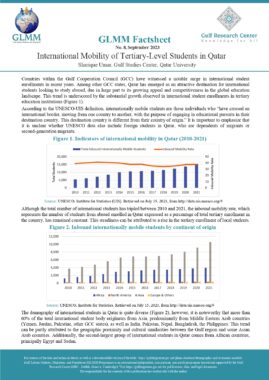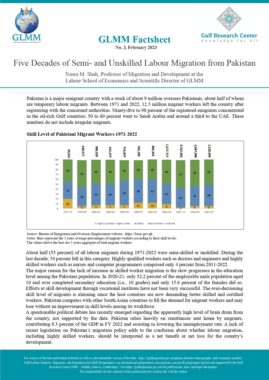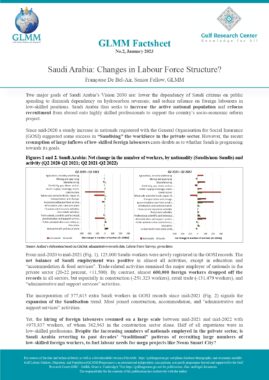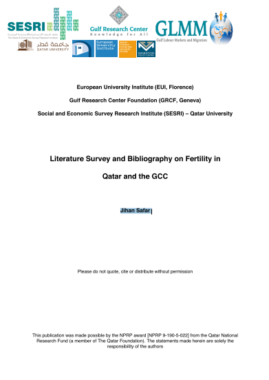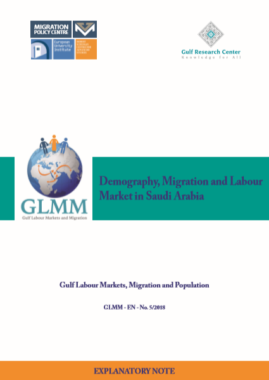Bahrain: Renewed visas by sector of economic activity (Q3 2009 – Q2 2014)

| Agriculture, hunting and forestry | Fishing | Mining and quarrying | Manufacturing | Electricity, gas and water supply | Construction | Wholesale and retail trade, repair | Hotels and restaurants | Transport, storage, communication | Financial intermediation | Real estate, renting, business activities | Public administration | Education | Health and social work | Other social, personal services | Extra-territorial organizations, bodies | Not specified | Total | ||
| 2009 | Q3 | 216 | 38 | 229 | 4,989 | 20 | 9,486 | 7,419 | 2,076 | 1,420 | 767 | 2,380 | 63 | 217 | 45 | 690 | 0 | 1,321 | 31,376 |
| Q4 | 228 | 44 | 285 | 6,297 | 22 | 11,614 | 9,632 | 2,576 | 1,411 | 940 | 2,943 | 100 | 480 | 81 | 660 | 0 | 2,105 | 39,418 | |
| 2010 | Q1 | 204 | 71 | 474 | 7,311 | 29 | 13,854 | 11,587 | 3,346 | 1,606 | 1,648 | 3,941 | 180 | 532 | 163 | 783 | 0 | 2,539 | 48,268 |
| Q2 | 97 | 69 | 276 | 5,605 | 15 | 10,384 | 7,950 | 2,210 | 1,442 | 1,384 | 3,636 | 79 | 697 | 161 | 642 | 0 | 1,493 | 36,140 | |
| Q3 | 58 | 27 | 128 | 3,534 | 7 | 7,847 | 4,969 | 1,423 | 854 | 680 | 1,788 | 28 | 205 | 71 | 364 | 0 | 642 | 22,625 | |
| Q4 | 198 | 149 | 278 | 4,099 | 13 | 9,824 | 7,108 | 2,138 | 1,120 | 979 | 2,821 | 1,633 | 474 | 214 | 585 | 0 | 457 | 32,090 | |
| 2011 | Q1 | 277 | 149 | 385 | 6,003 | 35 | 10,747 | 9,974 | 2,554 | 1,650 | 1,446 | 3,684 | 2,035 | 613 | 296 | 722 | 0 | 693 | 41,263 |
| Q2 | 281 | 181 | 405 | 5,961 | 43 | 9,153 | 9,529 | 2,474 | 1,461 | 1,285 | 3,508 | 993 | 884 | 199 | 795 | 0 | 496 | 37,648 | |
| Q3 | 195 | 199 | 273 | 4,800 | 48 | 6,956 | 7,848 | 1,972 | 1,210 | 806 | 2,513 | 683 | 328 | 125 | 761 | 0 | 472 | 29,189 | |
| Q4 | 271 | 193 | 248 | 5,960 | 44 | 9,633 | 8,789 | 2,586 | 1,309 | 979 | 3,198 | 832 | 485 | 187 | 817 | 0 | 430 | 35,961 | |
| 2012 | Q1 | 315 | 273 | 328 | 6,459 | 33 | 12,043 | 10,322 | 3,086 | 1,487 | 1,513 | 3,564 | 1,812 | 569 | 279 | 880 | 1 | 530 | 43,494 |
| Q2 | 276 | 289 | 306 | 5,686 | 54 | 10,621 | 9,192 | 2,423 | 1,449 | 1,437 | 3,487 | 1,356 | 922 | 318 | 897 | 1 | 504 | 39,218 | |
| Q3 | 261 | 348 | 310 | 4,998 | 69 | 9,484 | 8,439 | 2,190 | 1,183 | 988 | 2,722 | 1,200 | 437 | 268 | 704 | 0 | 445 | 34,046 | |
| Q4 | 263 | 307 | 252 | 4,934 | 46 | 10,384 | 9,017 | 2,519 | 1,312 | 1,012 | 2,702 | 1,306 | 465 | 293 | 824 | 0 | 392 | 36,028 | |
| 2013 | Q1 | 294 | 228 | 353 | 5,294 | 41 | 9,956 | 10,223 | 2,573 | 1,532 | 1,331 | 3,542 | 1,645 | 611 | 309 | 778 | 0 | 695 | 39,405 |
| Q2 | 291 | 192 | 286 | 5,652 | 71 | 9,644 | 9,931 | 2,614 | 1,434 | 1,331 | 3,752 | 1,990 | 895 | 217 | 847 | 0 | 607 | 39,754 | |
| Q3 | 273 | 260 | 343 | 5,321 | 23 | 9,788 | 9,236 | 2,390 | 1,254 | 973 | 3,131 | 900 | 395 | 152 | 866 | 0 | 453 | 35,758 | |
| Q4 | 311 | 304 | 379 | 5,910 | 51 | 11,647 | 10,412 | 2,949 | 1,400 | 1,010 | 3,252 | 988 | 454 | 222 | 945 | 0 | 518 | 40,752 | |
| 2014 | Q1 | 334 | 274 | 506 | 6,876 | 40 | 13,778 | 11,858 | 3,607 | 1,542 | 1,401 | 3,815 | 2,450 | 589 | 343 | 1,159 | 3 | 618 | 49,193 |
| Q2 | 410 | 271 | 458 | 6,438 | 82 | 12,658 | 11,202 | 3,239 | 1,648 | 1,364 | 3,756 | 1,928 | 1,016 | 345 | 1,014 | 0 | 724 | 46,553 |
Source: Labour Market Regulatory Authority (LMRA), Expatriate Management System (EMS)
ANNEXED NOTE
1. Technical Notes and Definitions
This table shows the flow of renewed permits (or visas) that are given to foreigners by the LMRA by sector of economic activity. These renwed visas combine those given for regular and temporary workers, investors and dependents.
The LMRA Expatriate Management System (EMS) stores information and past history of sponsors and workers, and their dependents, within the scope of Law No. 19/2006 on regulating the labour market. The scope of the system covers regular, temporary and investor work visas for foreign workers, their dependents, in the commercial sector, the government sector and the non-commercial, non-government sector. It presently excludes domestic workers, and work visas for artists and certain other categories of workers in non-civilian organizations. It distinguishes four types of visas for operational purposes: regular work visas for workers with 24-month validity; temporary work visas issued for workers with 6-month validity; investor work visas issued for investors investing up to BD 100,000; and dependent visas issued for dependent members of eligible foreign workers.The system tracks visa applications, renewals, mobility of workers between employers and from one occupation to another as well as notification of termination and runaway workers, and in general all operations of LMRA including inspection and offence management. The system is updated continuously and linked with other labour-related databases of the Kingdom, including CIO, GDNPR, GOSI, PFC, CSB, Ministry of Labour (MoL), and Ministry of Industry and Commerce (MOIC).
Work Visa is a legal certificate to allow a foreign worker to enter the country for working purposes for a period of two years with the possibility of renewal.
Worker is a generic term that refers to an employed person in general, or to an employee, a self-employed, or a particular category of worker, such as full-time or part-time worker, depending on the context in which the term is used. Four major categories of workers in terms of their status in employment are employees, employers, own-account workers, and unpaid family workers.
2. Institution which provides data
Labour Market Regulatory Authority (LMRA).
3. Data availability
The LMRA publishes these data under its Bahrain Labour Market Indicators (BLMI) section. The BLMI dashboard can be found in: (http://blmi.lmra.bh/2014/03/mi_dashboard.xml). The general BLMI data with other non-LMRA sources can be found: (http://blmi.lmra.bh/2014/03/mi_data.xml)
Figures and results are often reported in tables in both PDF and Excel formats.
Data for this LMRA table for 2009 can be found here: (http://blmi.lmra.bh/2009/09/data/lmr/Table_36a.pdf) and (http://blmi.lmra.bh/2009/12/data/lmr/Table_36a.pdf).
Data for 2010 can be found here: (http://blmi.lmra.bh/2010/03/data/ems/Table_36a.pdf), (http://blmi.lmra.bh/2010/06/data/ems/Table_36a.pdf), (http://blmi.lmra.bh/2010/09/data/ems/Table_36a.pdf) and (http://blmi.lmra.bh/2010/12/data/ems/Table_36a.pdf).
Data for 2011 can be found here: (http://blmi.lmra.bh/2011/03/data/ems/Table_36a.pdf), (http://blmi.lmra.bh/2011/06/data/ems/Table_36a.pdf), (http://blmi.lmra.bh/2011/09/data/ems/Table_36a.pdf) and (http://blmi.lmra.bh/2011/12/data/ems/Table_36a.pdf).
Data for 2012 can be found here: (http://blmi.lmra.bh/2012/03/data/ems/Table_36a.pdf), (http://blmi.lmra.bh/2012/06/data/ems/Table_36a.pdf), (http://blmi.lmra.bh/2012/09/data/ems/Table_36a.pdf) and (http://blmi.lmra.bh/2012/12/data/ems/Table_36a.pdf).
Data for 2013 can be found here: (http://blmi.lmra.bh/2013/03/data/ems/Table_36a.pdf), (http://blmi.lmra.bh/2013/06/data/ems/Table_36a.pdf), (http://blmi.lmra.bh/2013/09/data/ems/Table_36a.pdf) and (http://blmi.lmra.bh/2013/12/data/ems/Table_36a.pdf).
Data for 2014 can be found here: (http://blmi.lmra.bh/2014/03/data/ems/Table_36a.pdf) and (http://blmi.lmra.bh/2014/06/data/ems/Table_36a.pdf).
The definitions that the LMRA adopts for its data can be found in the Glossary section: (http://blmi.lmra.bh/mi_glossary.xml).
Date of access: September 2014
Similar Posts:
- Bahrain: Terminated visas by size of establishment (Q1 2009 – Q2 2014)
- Bahrain: Terminated investor visas by sector of size of establishment (Q1 2009 – Q2 2014)
- Bahrain: Terminated visas by sector of economic activity (Q2 2009 – Q2 2014)
- Bahrain: Terminated investor visas by sector of economic activity (Q2 2009 – Q2 2014)
- Bahrain: Renewed investor visas by size of establishment (Q3 2009 – Q2 2014)
Tags: Bahrain, Foreign Labour, Foreign Population, Legal Document, Residence Conditions















